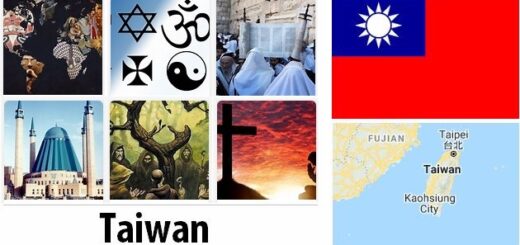Ping Yao Old Town (World Heritage)
Ping Yao was founded in the 14th century and has largely preserved its historic cityscape. The city in Shanxi Province has more than 3800 architectural monuments, mainly from the Ming and Qing periods. It represents six hundred years of urban planning history in imperial China. The two Buddhist temples are particularly worth seeing.
Ping Yao Old Town: Facts
| Official title: | Ping Yao Old Town |
| Cultural monument: | Certainly since the Qin period; Old town with 3800 monuments mainly from the Ming and Qing times; Between the 14th and 19th centuries and especially at the time of the Guangxu emperor, it was an important business center with 15 large markets and nationwide banks such as Ri Sheng Chang |
| Continent: | Asia |
| Country: | China, Shanxi |
| Location: | Ping Yao, southwest of Taiyuan |
| Appointment: | 1997 |
| Meaning: | Example of complex urban planning from six centuries of imperial China |
Ping Yao Old Town: History
| 221-206 BC Chr. | Qin time |
| 202-9 BC And 25-220 AD | Han period |
| 220-265 | Part of the Wei Empire |
| 265-420 | Part of the Jin Empire |
| 1368-1644 | Ming time |
| 1370 | Extension of the city wall |
| 1644-1911 | Qing time |
| 1875-1908 | Reign of the Guangxu Emperor |
Former capital of money
A few years ago, people in China only shrugged their shoulders when asked about Ping Yao. Hardly anyone had heard of the place. The town has one of the most imposing and best preserved city walls in China to offer. The fortifications from the 14th century, over six kilometers long and equipped with huge watchtowers, are twelve meters high and five meters wide. Within the walls there is a completely intact historical city center with numerous upper-class court and commercial buildings from the Ming and Qing dynasties. Small alleys criss-cross the place like a chessboard, venerable temples mark its cardinal points. This prime example of a classic Chinese urban complex is reminiscent of the picturesque Rothenburg ob der Tauber – with all due respect.
There was a special reason why no one knew or wanted to know this gem of Chinese urban design for a long time: the place – with its around 50,000 residents a village by today’s Chinese standards – was the most important financial center of the »Middle Kingdom«, and in this »capitalist one “Until the end of the 1970s, the Chinese communist leadership was anything but proud of the past.
In the course of the 19th century, the residents of the small town located in the middle of the Chinese Loess Plateau knew how to build their place into China’s number one banking center. According to hyperrestaurant, one of the most well-known private banks in the town was the Ri Sheng Chang, whose name means “prosperous and prosperous”. The company started out as a small paint business in 1796 and, half a century later, had grown into one of the most influential credit institutions in China with representative offices in every major city in the “Middle Kingdom”. During the so-called »Boxer Uprising« in 1900, when bitter fighting between the Chinese insurgents and the foreign occupying powers raged in the capital Beijing, this financial institution also financed the flight of the notorious Empress Dowager Cixi from the city. And in the last few years of their reign, the bankrupt Qing Dynasty borrowed money from the coffers of the well-known banking house to support their army. When, at the beginning of the 20th century, Shanghai blossomed into the “Paris of the Asian East” and numerous foreign banks opened their counters there, the rich years for the traditional houses from Ping Yao were over. The city was away from the trading ports of the south and east, where most of the money was made at the time, so that the traditional financial institutions could not withstand international competition and had to close. In the 19th century Shanghai blossomed into the “Paris of the Asian East” and numerous foreign banks opened their counters there, the fat years for the traditional houses from Ping Yao were over. The city was away from the trading ports of the south and east, where most of the money was made at the time, so that the traditional financial institutions could not withstand international competition and had to close. In the 19th century Shanghai blossomed into the “Paris of the Asian East” and numerous foreign banks opened their counters there, the fat years for the traditional houses from Ping Yao were over. The city was away from the trading ports of the south and east, where most of the money was made at the time, so that the traditional financial institutions could not withstand international competition and had to close.
Although the wealthy bankers of Ping Yao had already lost considerable influence by the time the People’s Republic was founded in 1949, they were still a thorn in the side of the communist leadership. They were insulted as “exploiters” and “big capitalists”. What happened to them between 1966 and 1976 – during the Cultural Revolution – nobody in the city wants to talk about anymore. When Deng Xiaoping ushered in fundamental economic reforms in China at the end of the 1970s, and shortly afterwards the slogan that it was honorable to get rich, the Chinese leadership gradually began to look at the history of Ping Yao with different eyes. In today’s times, when speculation on the stock exchange in China has become a downright national sport, one remembers the “capitalist” past of the place with pride and takes an example from the extraordinary entrepreneurship of the banking families of Ping Yao. You will also appreciate the unique atmosphere of the old town alleys, in which you feel as if you have been transported back to the “good old days”. Gradually, tourism is also starting to be stimulated. Fortunately, the town is still a long way from having similar visitor numbers as Rothenburg ob der Tauber, even if Ping Yao is slowly getting the attention it deserves again today. Gradually, tourism is also starting to be stimulated. Fortunately, the town is still a long way from having similar visitor numbers as Rothenburg ob der Tauber, even if Ping Yao is slowly getting the attention it deserves again today.



